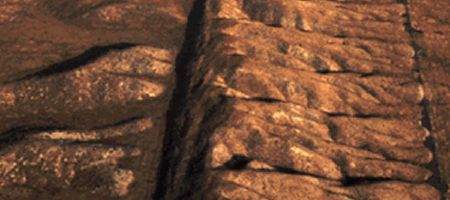An international team of scientists and engineers has drilled down a mile and a half into the epicenter of an earthquake.

The San Andreas Fault Observatory at Depth (SAFOD) project is aimed at improving the understanding of quakes and, with luck, predicting them. The team has sunk a hole at Parkfield, California, a town located along the San Andreas Fault where a number of minor earthquakes occur each year.
“There’s roughly a dozen major plates that the Earth’s surface is broken up into and this is one of the first times we’ve ever been able to drill into one of those boundaries between the tectonic plates,” says geologist Chris Marone, a professor at Pennsylvania State University. “We know very little of what’s within these fault zones.”
The team has recovered samples from the fault, which were placed in a pressure chamber at the lab.
“We’ll take a piece of the fault and shear it under a constant normal stress; under conditions that try to mimic what it was like along the fault at depth. At that point, we try to measure the strength and behavior of the sample,” says geologist Brett Carpenter.
The team’s also examining how fluids, particularly water, might impact the wear and tear of rocks at the fault zone as it flows through the earth’s crust.
“We’re measuring the rock property called permeability. It’s basically the ability of water to flow through the rocks,” says hydrogeologist Demian Saffer.
“We have a core sample from the San Andreas Fault [which we] trimmed into something we can put in our apparatus. We basically try to push water through the one-inch diameter core sample and measure how resistant it is to water flowing through it.”
It turns out that the samples weren’t permeable.
“Most of the material from the San Andreas Fault that we’ve tested is what we call an aquitard,” says Saffer.
“It’s very difficult for water to flow through, so this means it would be very effective as a seal or in trapping fluids either in the long-term or in the short-term during an earthquake.”
The next challenge is to understand how these findings impact the severity of earthquakes at that site and apply the lessons learned to other fault zones, which may have very different characteristics.
For example, the SAFOD team says that an area between two plates at the Parkfield site is filled with rubble and clay. When the plates shift here, they move in a slow steady creep, causing minor earthquakes hardly felt on the surface.
That’s very different from other fault zones where harder rocks like granite can lock together. Eventually, overwhelming pressure builds, releasing in a violent tremor, and often wreaking havoc above.
“What we don’t know is why we have those different behaviors,” says Saffer.
Findong out could help predict earthquakes in future, and potentially save thousands of lives.
“There’re a lot of people in California and a lot of people all over the world that live on active fault lines,” says Carpenter.






